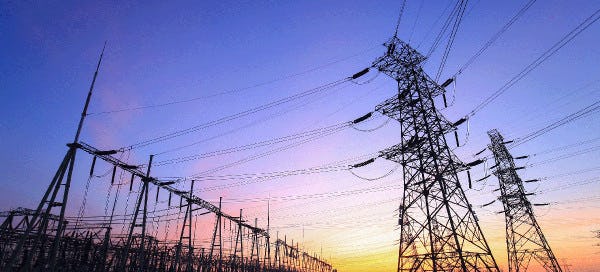Variable Electricity Plans in Texas: How Do They Work?
Looking to reduce your electricity bills by capitalizing on the market price of power generation, seasonal weather, and demand for energy? With variable rate plans, you can do all of this and more. Learn about these types of plans, and how you can manage your energy usage to make the most of them.
Understanding Variable Rate Electricity Plans
Fixed rate energy plans are popular in Texas because they allow customers to lock in a specific rate for energy, per kilowatt hour, for the lifetime of a contract. Some people like these plans because they give greater predictability in what your electricity bill will cost every month. Other folks, however, want to take advantage of the fluctuating price of energy, to save. That’s where variable rate plans come in.
Instead of paying the same price per kilowatt hour every month, the amount you pay will vary in response to the energy market. Typically, when wholesale prices go up or down, so does your rate.
How Variable Rates are Determined
The wholesale price of energy is based on two primary factors. Think of energy prices like gasoline prices: what you pay at the pump changes based on the cost of crude oil as well as supply and demand. Similarly, the cost of electricity is impacted by the price of fuel, which is especially important when that electricity is generated using coal or natural gas, the cost of which can be quite volatile. A second factor is the demand for electricity: for instance, during the coldest months of winter or the hottest of summer, more people need more energy to heat or cool their homes, and so demand goes up (and so do prices).
Potential Rewards and Risks
Pro: The Potential to Save on Energy Costs
With a fixed rate plan, you lock in a price for kilowatt hour of electricity, just in case prices go up. No matter how high they go, your cost will remain the same – allowing for consistency and predictability. However, if energy costs decrease, with a variable rate plan you’ll be able to take advantage of the falling prices.
Pro: No Cancellation Fees
With variable rate plans you are not locked into a long-term contract, so if you decide to switch plans (or even providers), you won’t have to pay an early termination fee.
Con: A Lack or Rate Safeguards
Since the price you pay for electricity isn’t locked in, you aren’t protected from skyrocketing prices. Plus, your provider can increase your rates at their discretion, within the terms of your contract, even if market prices are falling.
Con: Month to Month Costs Aren’t Consistent
The price of electricity can shift significantly from month to month. For instance, you might sign up for a variable rate plan at the beginning of the year, at a rate of 15 cents per kilowatt hours. But then a major ice storm hits in February, and the price of energy jumps to 20 cents. Once the storm is over, electricity demand decreases and production goes back to normal, and prices decrease again. Unless you monitor these prices, such rate changes might occur without you knowing about them until you receive your bill.

Who Should Consider a Variable Rate Plan
Some ideal customers for variable rate electricity plans are:
Short term residents, who don’t want to be locked into a long-term contract
Savvy users who enjoy monitoring their usage and market prices
Energy conscious households
Those with flexible budgets, who can pay more one month in order to pay less another
How to Lower Your Energy Bill with a Variable Plan
First of all, you want to optimize your home’s energy consumption by not using major energy draws during off-peak hours of 6 pm to 10 pm – in fact, it’s best to charge an electric vehicle or run loads of laundry and dishes overnight. Secondly, you’ll want to watch energy market pricing trends so you’ll know what to expect on your bill, and even review historical rate data to get insight into potential future rates.
What to Look for When Choosing a Variable Rate Electricity Plan
Flexibility: no deposit or long-term contracts, no early termination fees
Beneficial Contract Terms: read the fine print to ensure that you won’t be paying any hidden fees or blindsided by unexpected conditions
Rate Adjustment Policies: understand the provider’s right to adjust rates, even if market conditions are favorable to variable rate plans
Renewable Energy Options: if preserving the environment is important to you, look for a variable plan that is backed by green energy
Rhythm Energy's Variable Electricity Plan
Pay one month at a time, with no deposit long term contract. Upgrade or cancel with no termination fees. And because Rhythm Energy offers 100% renewable energy with every plan, know that you’re doing right not only by your wallet, but also by the planet. Interested? Learn more on our Simply Green Flex Plan page.
FAQs
How do variable rate electricity plans work?
The cost that customers pay for electricity fluctuates up and down with the wholesale market price of energy, which is based on factors such as the cost of fuel, weather, and demand. Variable rate plans allow you to take advantage of these price fluctuations, to potentially save money.
How often do variable rates change?
Because these are month to month plans, the rates change every month.
What factors influence variable electricity rates?
The cost of fuel, weather events, and demand for electricity in your service area.




